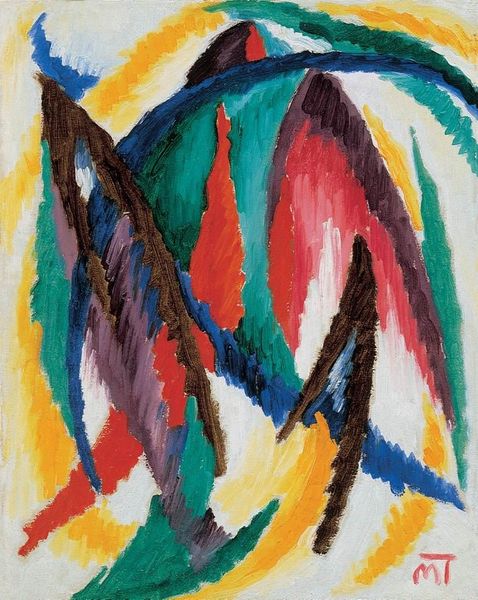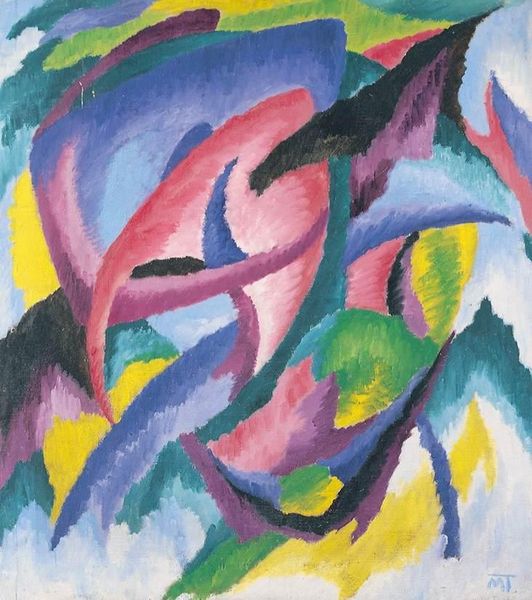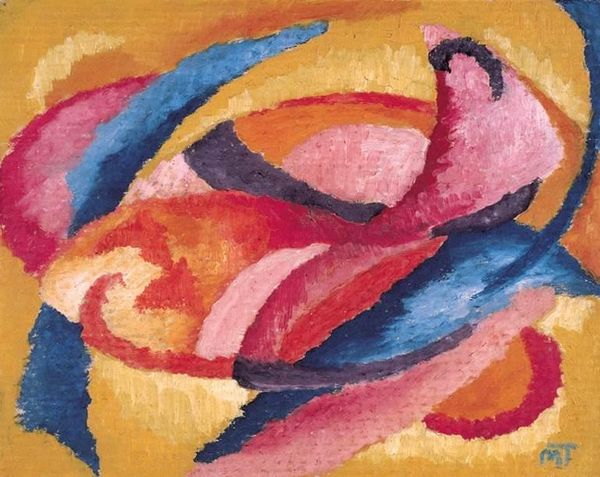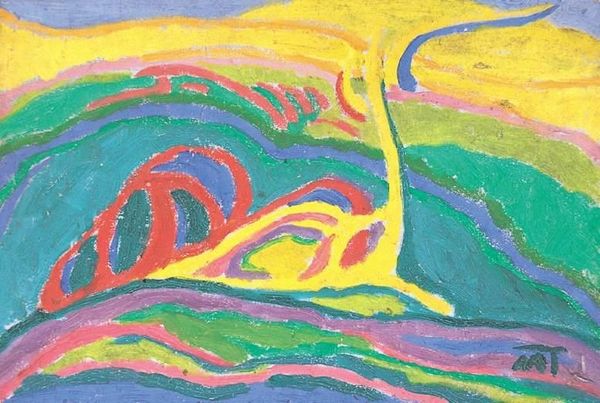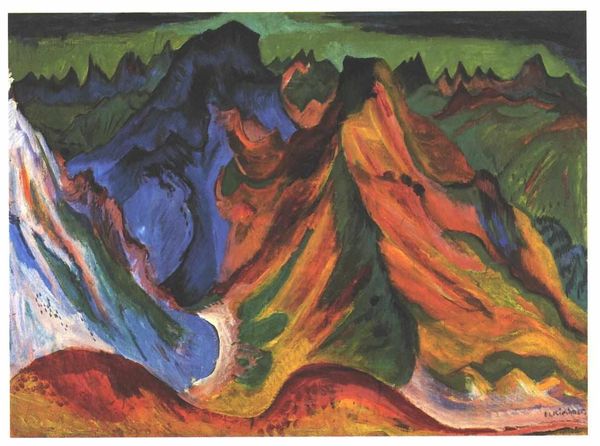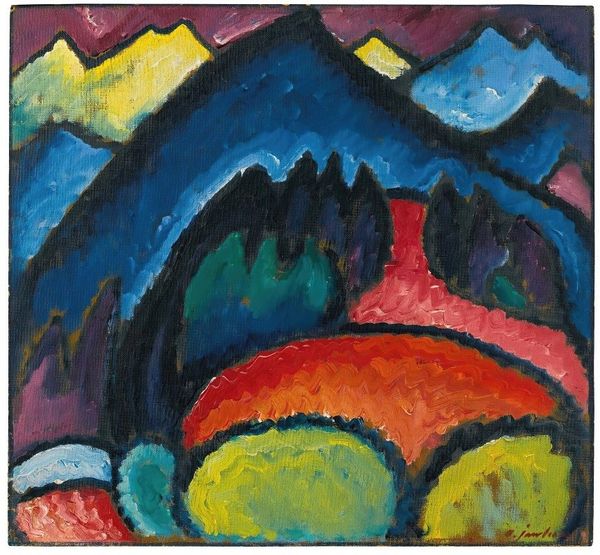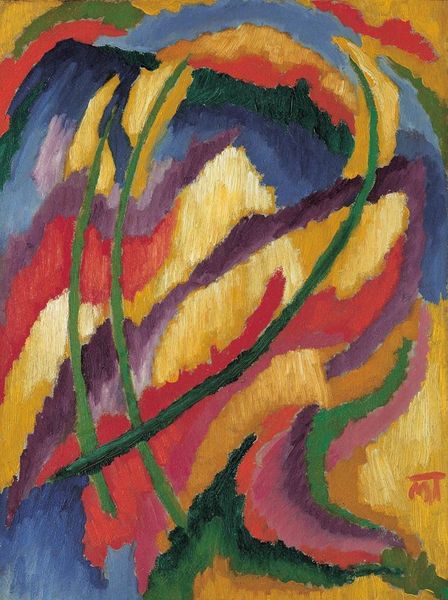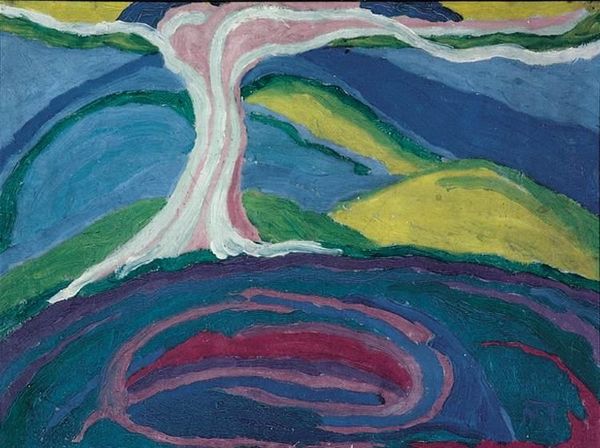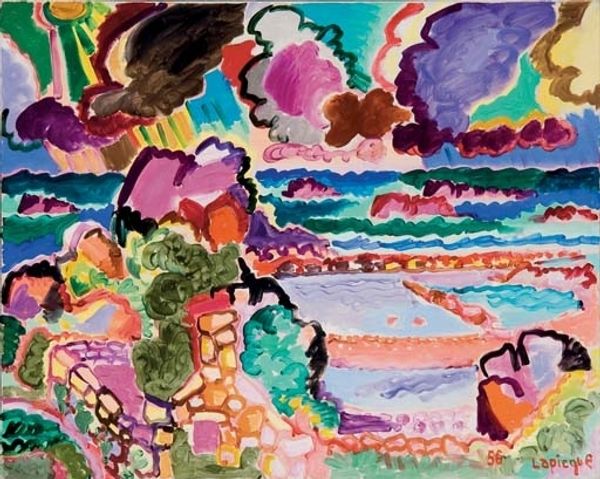
Copyright: Public domain US
Curator: Janos Mattis-Teutsch's "Composition," painted in 1919, presents us with a fascinating study in abstraction, a symphony of colour, wouldn't you say? Editor: My initial impression is... vibrant chaos! Like looking into a kaleidoscope after someone shook it really, really hard. It’s exciting, almost overwhelming. I get this immediate jolt of energy, but I can’t quite make out anything definable. Curator: Precisely. Mattis-Teutsch aligns himself here within a current of Expressionism, even Fauvism, pushing beyond representational forms. We observe how he orchestrates blocks of colour—blues, greens, yellows, reds—to generate a dynamic field of visual interaction. There is almost an angularity in some shapes here; what are your thoughts on that compositional choice? Editor: It's a real push-and-pull, isn’t it? Those sharper edges feel like the artist is deliberately disrupting any sense of easy harmony. It's not a relaxing composition. I keep expecting these shapes to collide. I suppose in terms of pure emotion it feels to me very full of struggle but I feel it has resolved happily; so triumph with some sadness or melancholia? Curator: It might be the expression of internal psychic tensions mirrored through external form. The interplay between contrasting colours, hot yellows, deep purples creates, or generates I think, internal resonances. This speaks directly to an emotional response which can often elude literal or easy comprehension. Editor: Definitely agree that there’s a very direct, almost primal communication happening. All that vibrant color also somehow touches into nature, reminding me of overgrown, wild scenery. But as the eye travels around, there is order of color or contrast used, such as you might observe in the mountains. I imagine perhaps mountains? Or maybe plants if zoomed close enough. Curator: Mattis-Teutsch has used a high key palette. It allows him to maximise chromatic intensity. His colour selection becomes another way for Mattis-Teutsch to convey the dynamism that may be related to mountain climbing. As we close our observation here, I invite the listener to contemplate: to what degree does the abstraction facilitate a more genuine, authentic encounter? Editor: Ultimately, I appreciate how it challenges us. I started with a simple rush of energy, and end with an appreciation of struggle, of internal life – that's not always easy!
Comments
No comments
Be the first to comment and join the conversation on the ultimate creative platform.


